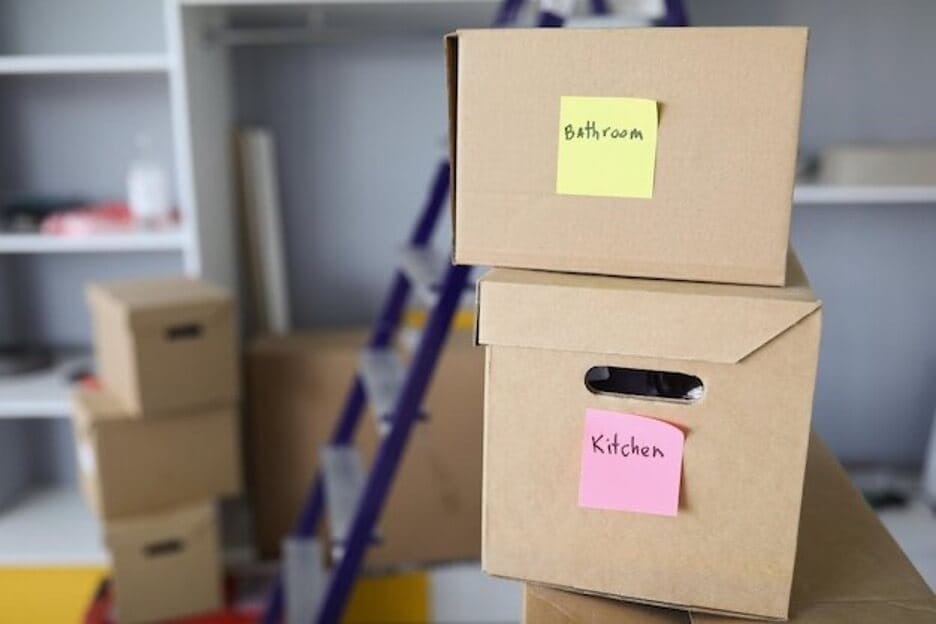Nothing is more frustrating than standing in your new home surrounded by identical brown boxes with no clue what’s inside them. That box labeled “miscellaneous” could contain anything from winter coats to coffee mugs. Good luck finding your phone charger when every box says “bedroom stuff.”
Smart labeling is like leaving yourself helpful notes for the future. McLaughlin Transportation always emphasizes good labeling practices with their clients. They’ve seen firsthand how proper labeling speeds up moves and reduces damage. Well-labeled boxes get handled more carefully and placed in the right rooms without constant direction.
1. What Information Goes on Each Box
Every box needs enough information to be useful but not so much that labeling becomes a chore. Focus on the details that actually matter during moving and unpacking.
- Room destination: Clear room names help movers place boxes correctly without having to ask where everything goes.
- Contents description: Be specific enough to be helpful. “Kitchen dishes” is better than “kitchen stuff.”
- Priority level: Mark boxes with immediate necessities so you can find them quickly in your new home.
- Fragile warnings: Special handling instructions protect delicate items during transport.
- Box numbers: Numbering boxes helps track everything and makes sure nothing gets lost.
Good labeling information prevents confusion and speeds up the entire moving process.
2. Visual Labeling Systems
Color-coding works faster than reading labels, especially when you’re tired and stressed. Different colors provide instant recognition that helps during both loading and unpacking.
Assign each room a specific color and use colored tape, markers, or stickers. Kitchen gets green, bedrooms get blue, living room gets red. Whatever system makes sense to you.
Use different colors for priority levels, too. Red for immediate needs, yellow for weekly needs, green for storage items. This helps identify essential boxes even when they’re buried under other containers.
- Fragile items: Bright colors like orange or red immediately alert handlers to be extra careful.
- Personal belongings: Color-code items by family member to speed up unpacking in bedrooms.
Visual systems work especially well when multiple people are helping with the move.
3. Modern Labeling Technology
Smartphones and apps can upgrade your labeling system beyond basic pen and paper. Digital tools provide searchable records that help locate specific items quickly.
Take photos of the box contents before sealing them. Create a simple digital inventory with box numbers and photos. This helps you remember what you packed where.
Some moving apps let you create detailed inventories with photos and room assignments. QR codes can link to digital lists that provide complete content information.
Store digital inventories in cloud services so family members can access information from their phones. This prevents the “where did you pack the…” questions that happen during unpacking.
4. Strategic Label Placement
Where you put labels affects how useful they are during the move. Smart placement keeps labels visible and readable throughout the entire process.
Label multiple sides of each box. At least the top and one side. This ensures visibility no matter how boxes get stacked or oriented.
Always label the top of boxes since that’s usually the most visible surface. Avoid placing labels on corners where they might get damaged during handling.
Conclusion
Good labels guide your unpacking priorities and help you get settled faster. Start with boxes marked as containing immediate necessities like toiletries, medications, and basic kitchen supplies.
Priority labeling helps identify essential boxes even when they’re buried under other containers. Set up functional spaces first rather than trying to unpack everything at once.


